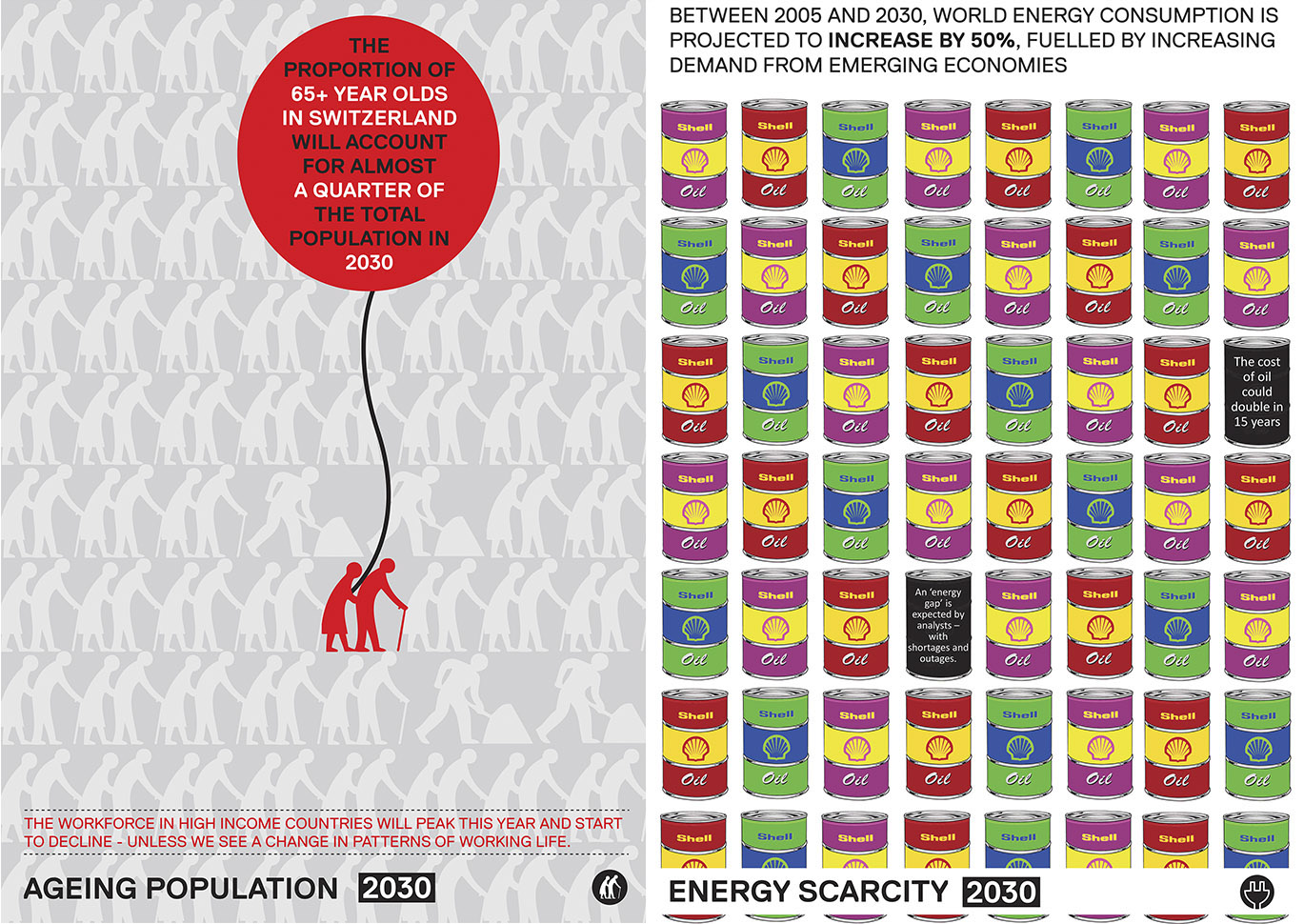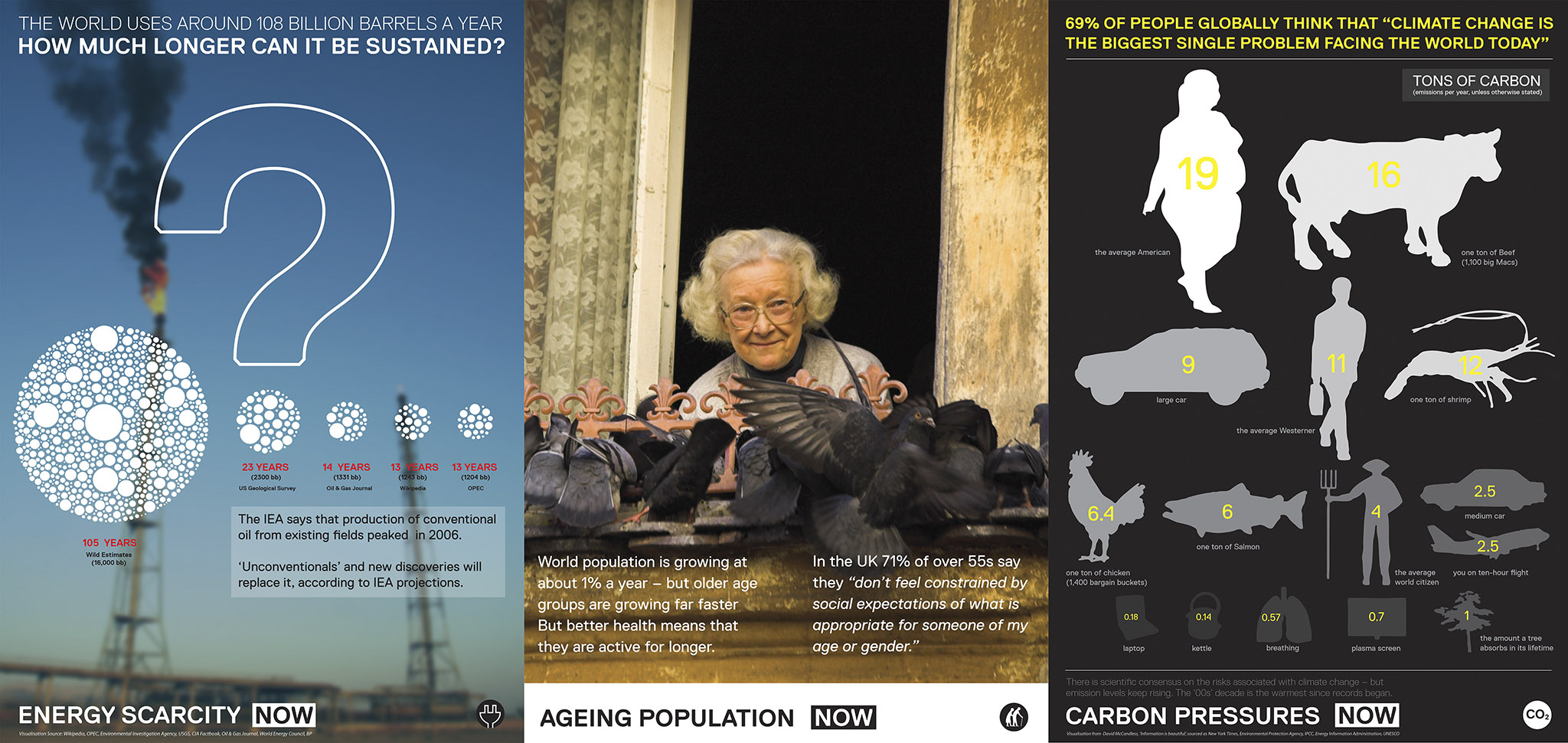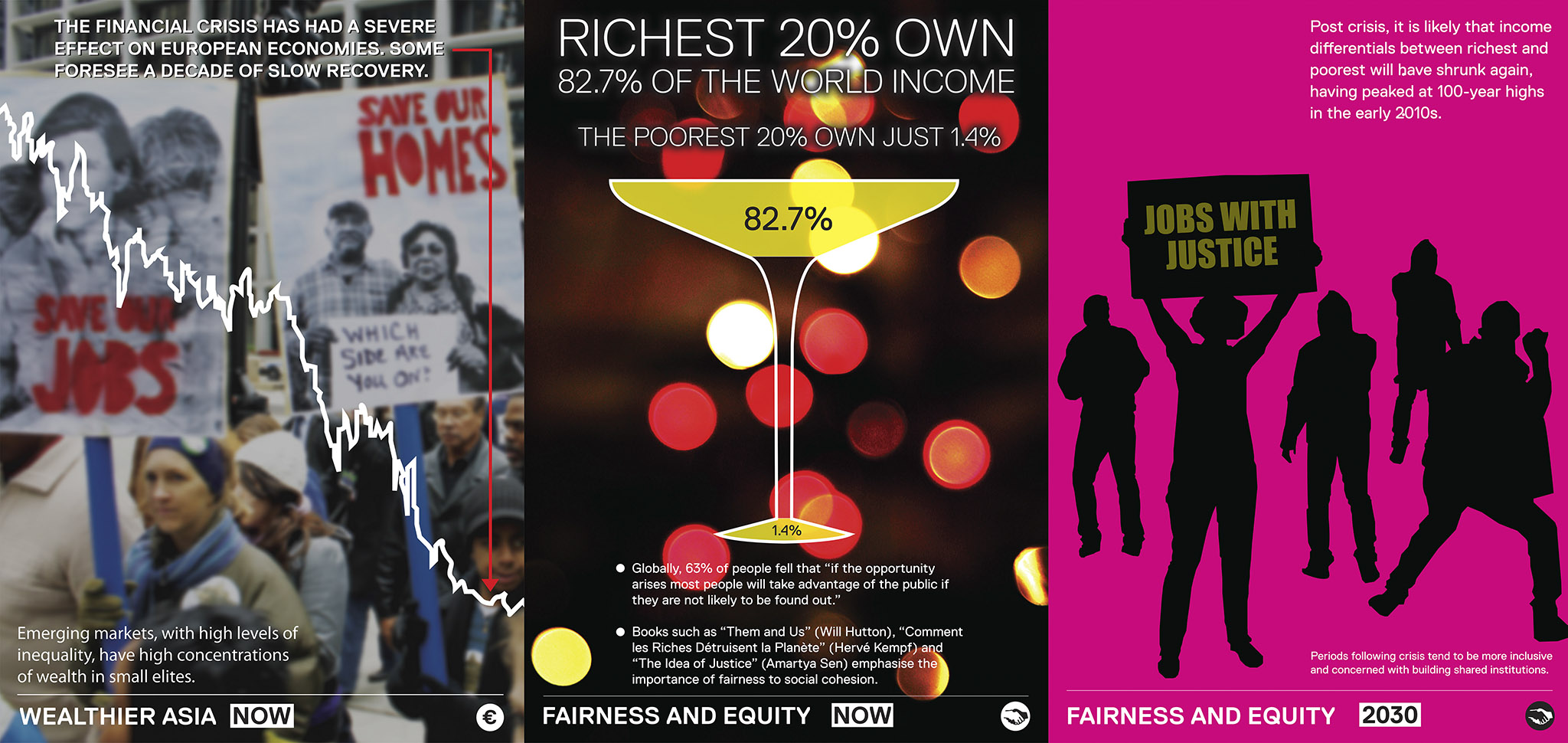Projects
DESIGN FOR CLIMATE CHANGE

The Verbier GPS, in partnership with HRH the Prince of Wales’s Foundation for the Built Environment in the United Kingdom, and in collaboration with Botza and the Commune de Bagnes is helping to develop a strategy for a more sustainable Verbier and Val de Bagnes.
Working with our network of partners such as the Futures Company, Noah Raford, Emile Hooge and Wendy Schultz, we created the strategy and series of touchpoints for a workshop that would enable multiple stakeholders and large businesses in the Verbier region to identify key challenges in their business.
Three Horizons Model, as formulated by the International Futures Forum:

“The Horizon 1 (H1) version of the world model is our current situation as diagnosed in the trends and discontinuities till date. Horizon 3 (H3) is the vision/s of a viable future society. In H3 the world model provides a thinking and learning framework for considering the preconditions for ‘the good life’ – future planetary viability. Horizon 3 has the potential to displace Horizon 1. But since the future is emergent and can never be well known, it must always remain a shaping vision rather than a predictive one.
The area of great challenge and tension is Horizon 2 (H2). Here the world model can be used as a framework to help identify the innovations and changes that will help the transition to ways of living within the new conditions. This is the horizon in which we experiment, invent and pioneer alternatives. Some will succeed, some will fail, some will be hijacked to prop up the declining system and some will, surprisingly, be effective beyond expectation.”
Based on this model, The Futures Company identified six key drivers that will have an impact on the Verbier region. We worked with them to explore the potential risks and challenges, and designed 6 sets of posters that explore each driver in depth.
For instance, one of the key driver identified was Energy Scarcity, as seen in the image below. The poster on the left shows Horizon 1, the current scenario, and the poster on the right shows Horizon 3, the possible changes as of 2030. The blank poster in the middle shows Horizon 2, an open canvas for the stakeholders to work with. A space to identify the challenges and the shifts between now and 2030 and annotate them on the blank poster. The immediacy of real data and powerful imagery on the posters helped participants get a quick sense of the drivers and they could spend more time on the challenges.




Once the challenges were identified, participants worked in groups to discuss each of these challenges, and identify ‘key challenges’ which we noted on blank challenge cards. These touchpoints fed into the final report, a sort of co-created document of the challenges around climate change that businesses in the Verbier region would face, and ways in which they could be mitigated.
All posters have now been acquired by the Prince’s Foundation’s and form part of their permanent exhibition.